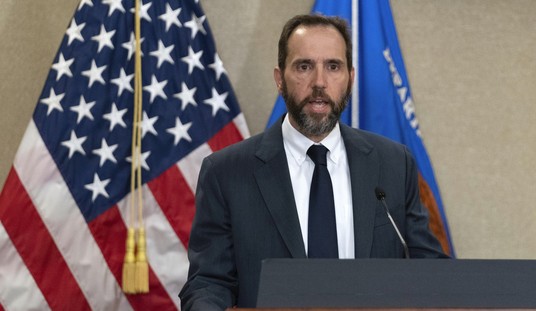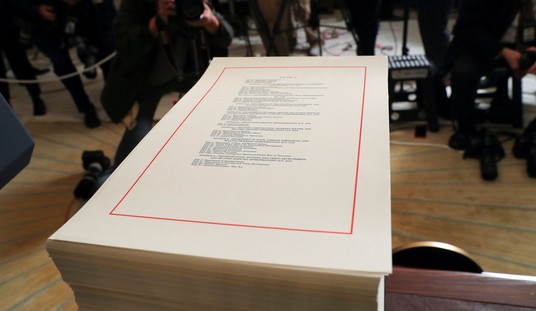I have been writing about hunger in Gaza for more than a year. If I've discovered anything, it's that both sides are using food and the misery of Gazans to further their war aims and that the Western media has placed its thumb on the scale in favor of the terrorists in telling the food story in that war-ravaged region.
People in Gaza are hungry. Food is scarce, and the group suffering the most is children. Many children are showing signs of malnutrition. Some have apparently died of starvation.
But bandying about words like "starvation" and "famine" is dangerous to the truth. The Integrated Food Security Phase Classification (IPC) created the internationally recognized definition of "famine."
"For famine to be declared, at least 20% of the population must be suffering extreme food shortages, with one in three children acutely malnourished and two people out of every 10,000 dying daily from starvation or from malnutrition and disease," reports Reuters.
"Mounting evidence shows that widespread starvation, malnutrition, and disease are driving a rise in hunger-related deaths," the IPC said. The organization added that "famine thresholds" have been reached for food consumption in most of the Gaza Strip.
Just as an aside, I doubt very much whether any Hamas terrorist fighters are going hungry. The Times and most other mainstream news publications fail to point that out. There is also precious little reporting on how the allies of Hamas in the UN are refusing to help distribute tons of aid sitting at Gaza's border because the assistance is from the Gaza Humanitarian Foundation (GHF), a joint U.S.-Israeli effort to feed Gazans, but they deny Hamas control over it.
The UN doesn't like the fact that it doesn't control the distribution of aid. It doesn't believe that giving aid to Hamas to distribute to its fighters and sympathizers is a gross dereliction of its responsibilities to the people of Gaza.
Last Thursday, the New York Times published a long, compelling, emotional article on hunger in Gaza. One of the central figures in the story is 18-month-old Muhammad Zakariya Ayyoub al-Matouq. The accompanying photo of the emaciated child went viral.
As it turns out, the story was only partially true. The child was, indeed, hungry and starving. But he had pre-existing maladies that worsened his condition.
Lying on the front page, apologizing via a PR Twitter account.https://t.co/YFDSQsdYnJ pic.twitter.com/ZPt32bCM7o
— Amit Segal (@AmitSegal) July 30, 2025
We’ll start with the central character of this very sad tale: Muhammad Zakariya Ayyoub al-Matouq. He’s the sick young boy who was photographed, and who Matti Friedman wrote about earlier this week. The Times, in its viral version of the story from last week, reported that his mother said that 18 months ago he “was born a healthy child,” not long after Hamas’s October 7, 2023 attack on Israel triggered the current war.
His mother’s claim has since been removed from the piece, without noting that an earlier version of the story misled readers about the child’s true condition. The story now reads: “Muhammad, according to this doctor, had pre-existing health problems affecting his brain and muscle development.” It goes into no further detail about those problems. Nor does the note appended at the end of the story.
Notification about the amendments to the article appeared via the Times’s PR division’s X account, rather than via the Times’s main channels. Then the Times buried the editors’ note at the bottom of the article in question, instead of placing it, as is more usual, at the top.
“Children in Gaza are malnourished and starving, as New York Times reporters and others have documented,” the newspaper said in a written statement. “We recently ran a story about Gaza’s most vulnerable civilians, including Mohammad Zakaria el-Mutawaq, who is about 18 months old and suffers from severe malnutrition.
“We have since learned new information, including from the hospital that treated him and his medical records, and have updated our story to add context about his pre-existing health problems. This additional detail gives readers a greater understanding of his situation,” it said.
The Times' correction failed on several levels. If it really wanted to add "context," it might have mentioned the role that Hamas is playing in this tragedy. The child would not be wanting for food (more than usual, as is the case in Gaza normally) if Hamas weren't continuing its war against Israel.
Then there's the matter of the missing statement from the mother about the boy's early health and whether any of those conditions existed before the war. The Times sorta forgot to explain why that key bit of evidence was missing from the edited version of the story.
Other problems with this story include relying on the Gaza Health Ministry (GHM) for information about what's going on in the territory. The GHM tells the media exactly what the Hamas media office wants the world to know. Not to include that vital piece of the information puzzle in Gaza is irresponsible journalism.
The New York Times correction page is never dull. It's sometimes funny, sometimes entertaining, but always informative. Too bad the rest of the newspaper is so predictably, redundantly left-wing.










